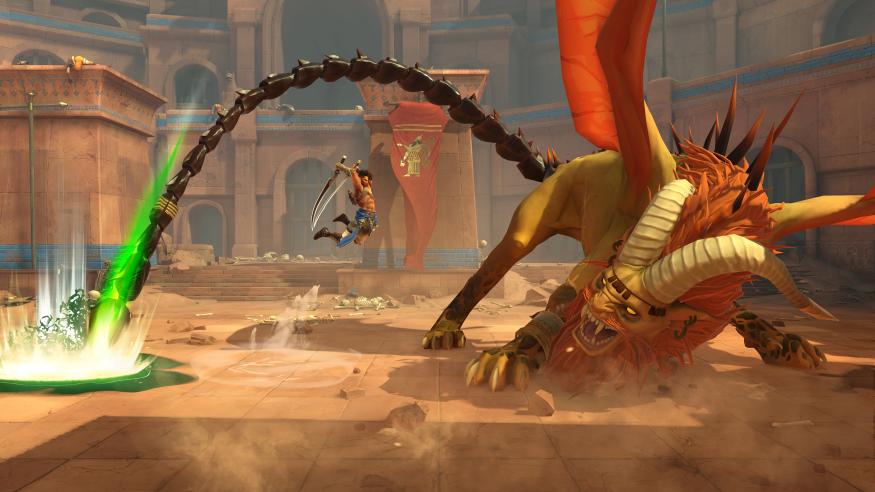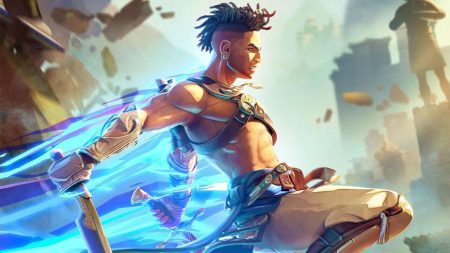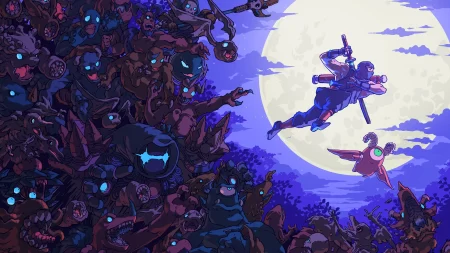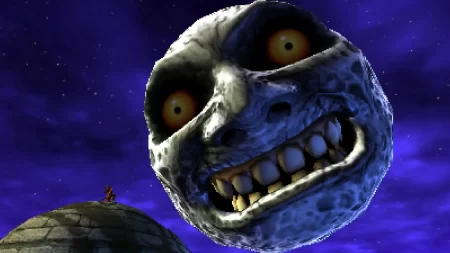2D Still Reigns Supreme
With the recent reveals of Super Mario Bros. Wonder, Sonic Superstars, and Prince of Persia: The Lost Crown, AAA publishers have made a resoundingly clear statement to players: 2D platformers aren’t going anywhere. In fact, they can still be among the biggest releases of any given year.
The release of Metroid Dread in 2021 made me optimistic that the biggest game makers on this planet still saw the potential for major tentpole releases with 2D mechanics and pretty (albeit fairly simple) 3D visuals. Sure, fans of side-scrollers have seen plenty of quality titles on the indie side for quite some time (e.g., Shovel Knight, Celeste, Inside, Yooka-Laylee and the Impossible Lair, plus dozens of Metroidvanias), but AAA companies have largely cast aside such experiences in favor of increasingly sprawling open worlds and photorealistic graphics. And despite the fact that the New Super Mario Bros. games—divisive as they can be—were all top sellers, even Nintendo’s 2D offerings in the past decade have been sparse, with Donkey Kong Country: Tropical Freeze and Yoshi’s Woolly World serving as the only major new standouts.
Luckily, Ubisoft, Sega, and the Big N appear to be signaling that 2D fans have nothing to fear, as all three of them have something new to bring to the second dimension.
(Note: To be clear, I’m talking specifically about games primarily based on two-dimensional, side-scrolling movement, not necessarily 2D art direction.)
Prince of Persia: The Lost Crown
This year’s Summer Game Fest kicked off with the reveal of Prince of Persia: The Lost Crown, marking the first brand-new Prince of Persia release since the Xbox 360 era and the first 2D game in the series in decades. Designed as a Metroidvania, The Lost Crown appears to showcase the flashy combat mechanics of the classic 3D Prince of Persia games combined with challenging platforming hazards and a non-linear approach to gameplay progression.
What really stood out to me in this trailer was Ubisoft’s decision to feature character and environmental designs more reminiscent of The Sands of Time than something more modern and realistic. As a result, the Prince has more emotive facial features, and the enemy designs seem more like classic cartoon foes. Additionally, the colorful attack animations and time slow-downs with big hits make the gameplay look like a 2D version of 3D combat, so players yearning for a new 3D Prince of Persia can at least have a taste of what they yearn for.
The more I think about it, The Lost Crown feels like a more logical step forward for the long-dormant franchise than just another 3D adventure. As a 2D Metroidvania, Prince of Persia can focus more on engaging battles, seamless movement, and clever puzzle design, whereas a new 3D PoP would probably end up just being Assassin’s Creed but worse. Too many AAA games suffer from empty open worlds, unnecessary RPG and crafting mechanics, byzantine armor systems, and bland combat, and nobody is more to blame for these trends than Ubisoft. Why not try a different route?
Sonic Superstars
For better or worse, the Sonic franchise has always taken big swings with its little blue speedster. Even if you think such risks pay off more than they don’t, it’s hard to deny that each new Sonic release comes with a degree of longing from fans of the classic titles that made them fall in love with the franchise in the first place. 2017’s excellent Sonic Mania proved that there was still an appetite for new takes on 2D Sonic, and Sega has finally acknowledged that maybe another game like that (albeit this time with completely overhauled graphics) might be the right direction for their top mascot.
For the most part, Sonic Superstars, which was also unveiled during Summer Game Fest, looks like “New Super Mario Bros. but Sonic.” The title features mostly 2D gameplay with entirely 3D visuals and even includes four-player local co-op. Each stage that appears in early trailers showcases a welcome blend of speedy side-scrolling gameplay along with clever 3D bonus levels, new power-ups, and plenty of cinematic flourishes. The game also looks like it’ll have plenty of secrets to find in each level, and with the ability to play as multiple different characters, Superstars seems like it’ll have plenty of replay value.
There’s not much more to say about Sonic Superstars at this point, since everything feels pretty self-explanatory. It doesn’t seem like a truly ambitious use of the Sonic formula, but this is a series that could use a safe entry every now and then. We’ll see if the co-op actually enhances a game like this (my prediction: It won’t), but I’m glad to see Sega attempt to give players a solid, polished 2D experience with enough new ideas to justify its own existence.
Super Mario Bros. Wonder
At its most recent Direct presentation, Nintendo closed the show with a brand-new (and heavily rumored) 2D Mario game, the first since the release of its (underrated) mobile game Super Mario Run in 2016. Brandishing a new stop-motion-like art style and a bevy of new assets and abilities, Super Mario Bros. Wonder seeks to blend traditional Mario mechanics that have served as the bedrock of 2D gaming since the mid-80s with… well… psychedelics?
While people have made their fair share of jokes about the rotund plumber’s relationship with mushrooms over the decades, this newest take on the formula seems to lean fully into that idea. Super Mario Bros. Wonder takes classic-seeming level design and throws in items that can change a fairly basic Mario level into a fever dream (or a wild trip). According to the trailer, when Mario touches a mysterious flower, a different kind of bizarre alteration occurs for a limited period of time, including: completely re-animating nearby objects and enemies; overhauling certain visual designs; making new collectibles appear; and even changing the appearance (and capabilities) of playable characters.
In one example, warp pipes start moving. In another, Mario turns into a large, spiky ball that easily bowls through blocks and other objects. In nearly every showcased example, some sort of purple currency appears that Mario must collect. All of these scenarios involve a wiggly border around the screen that cycles through trippy imagery and constantly changes color.
My guess is Nintendo will frame everything as Mario and company engaging with “wonder” mechanics rather than experimenting with psilocybin, but either way it’s clear the Big N sees some sort of expansion beyond the stated realities of the Mushroom Kingdom as a necessary step forward for its flagship franchise. They could have easily made New Super Mario Bros. Switch and called it a day, but with Wonder, they seem to be presenting a new take on Mario where basically anything is possible, and so far it looks tremendous.

Not Fading Away
All of these announcements scream the same message: There’s so much more that can be done with 2D mechanics. As the AAA games industry seems hell-bent on increasing scale, adding more “content,” and further complicating the minute-to-minute experience of each title, it has become increasingly refreshing to see some of the biggest publishers buck major trends and try to recapture the magic from decades past with a modern approach. We’ll see if any of these games are worth a damn when they actually release (for all we know, I just gassed up three future flops), but for now, I’m just pleased to see new experiences that remind me of the games I grew up playing.
Now, if only we could get a new 2D Legend of Zelda sometime soon…
Sam has been playing video games since his earliest years and has been writing about them since 2016. He’s a big fan of Nintendo games and complaining about The Last of Us Part II. You either agree wholeheartedly with his opinions or despise them. There is no in between.
A lifelong New Yorker, Sam views gaming as far more than a silly little pastime, and hopes though critical analysis and in-depth reviews to better understand the medium's artistic merit.
Twitter: @sam_martinelli.













